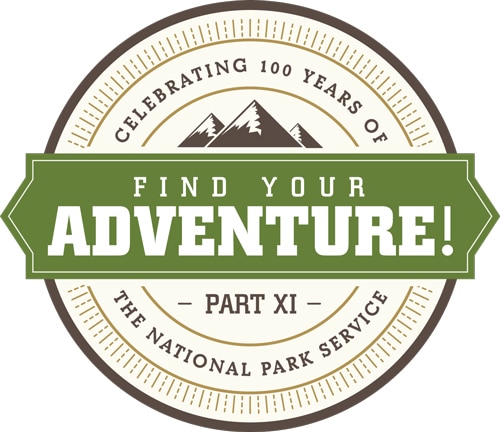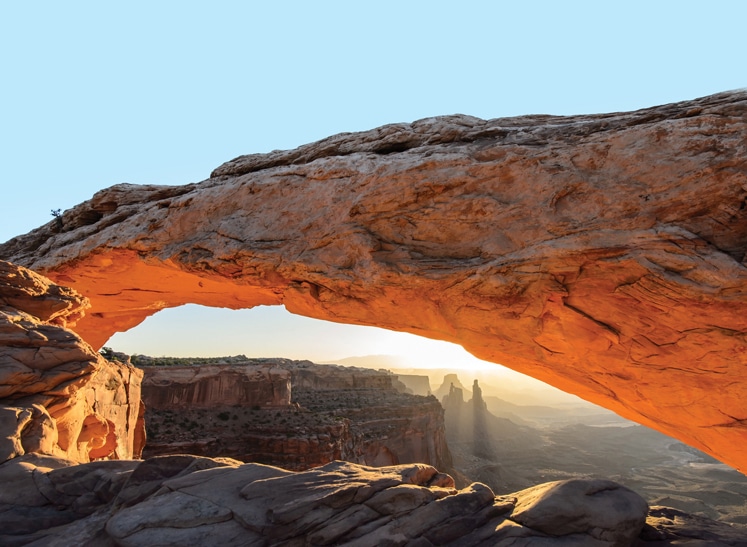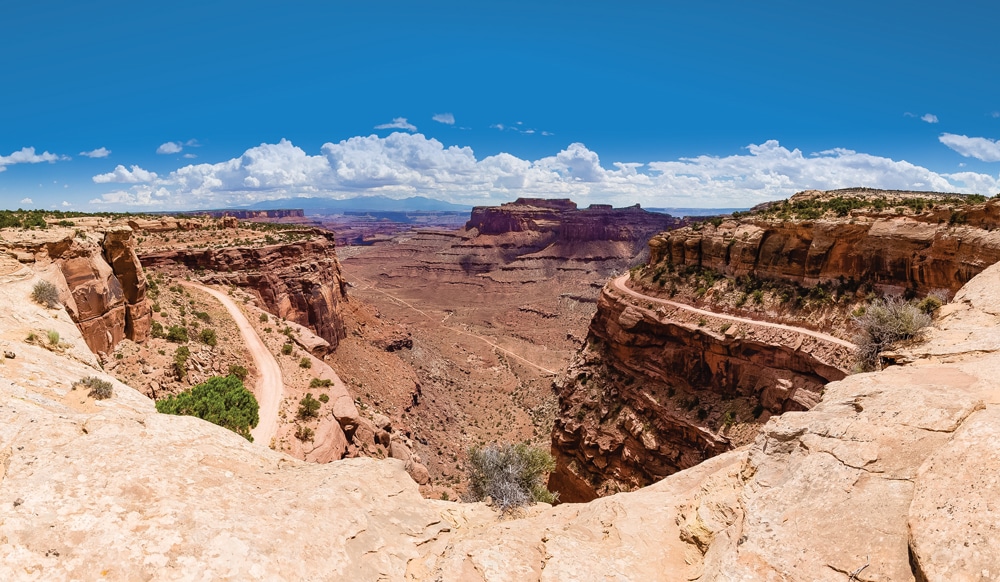The hardest part about a visit to Utah’s Canyon lands National Park is deciding where you’ll start
It’s common to describe a particularly difficult dilemma as being between a rock and a hard place. Which is, somewhat ironically, exactly the situation you may find yourself in on your first visit to southeastern Utah’s Canyonlands National Park.
If that sounds like a curious assertion with which to lead off a travel article, allow us to explain. You see, newcomers to Canyonlands are inevitably faced with a rather unique quandary: Namely, which of this rocky park’s dozens of hard-core adventures you’ll want to try first.
Decisions, Decisions
While it’s true that virtually all of America’s national parks have their adventurous side, the 527 square miles of Canyonlands National Park have long been known as a serious playground for lovers of all things outdoors.
Part of the explanation for this popularity can be found in the park’s diverse geography. In fact, the best way to wrap your head around this, the largest national park in Utah, is to understand that Canyonlands is divided into four distinct districts, or regions.
By far, the most visited part of Canyonlands is the northernmost section known as the Island in the Sky. With its proximity to both the go-for-it town of Moab and the jaw-dropping scenery of Arches National Park (definitely worth the detour), this large mesa is one of the two most easily accessed areas of the park and therefore a great place to start your visit.
The second most popular and equally accessible region of Canyonlands is known as The Needles. One look at the spire-like formations that are this southeastern section of the park’s signature feature and you’ll understand where it gets its name.
The Green and Colorado rivers play such an important role in the Canyonlands landscape that they can be thought of as part of the park in their own right. Consider for a moment that this part of southeastern Utah is an area where summertime temperatures frequently break into the triple digits and you’ll begin to understand the appeal of exploring these two waterways.
While those meandering rivers take some effort to get to know, exploring them is a relatively straightforward matter compared to Canyonlands’ most remote region known as The Maze. This compact area in the southwestern corner of the park has been described as one of America’s 10 most dangerous places to hike because of its confusing terrain, lack of water and unrelenting sun, but dedicated seekers of solitude will find it offers just what they’re looking for.
Adventures: Island in the Sky
There are only 20 miles of paved roads in the Island in the Sky section of Canyonlands National Park, but don’t let that fool you. There’s enough adventure here to keep you busy for days.
For starters, there’s the short ½-mile trail to Mesa Arch. While that name might not mean anything to you, there’s a good chance you’ve seen it in sunrise photographs, where the glowing stone span frames views of nearby Washer Woman Arch and the distant snowcapped La Sal Mountains.
There are the usual short hiking trails, like the ones to the meteor crater known as Upheaval Dome and the aptly named Grand View Overlook. But the Island’s real claim to fame is the unpaved 100-mile track called the White Rim Road, which runs around the mesa’s circumference just below the park’s more touristy viewpoints.
There are two ways to experience the White Rim Road, and both are equally adventurous. Hardy mountain bikers can explore it via pedal power (generally, three-to-four days). Or, for a less strenuous option, you can also travel the White Rim Road by four-wheel-drive vehicle (two-to-three days). Though you could conceivably do either route on your own, in both cases your best bet is to sign up for one of the organized multiday tours offered by a number of Moab outfitters.
Adventures: The Needles
As memorable as those adventures may be, The Needles region of Canyonlands National Park has its own unique diversions in store.
The fun starts along Utah State Route 211 before you even reach the park entrance station, with a stop at the roadside pullout for Newspaper Rock. While you may have seen ancient petroglyphs in other places, nothing can prepare you for the rock art explosion you’ll find here. Highlights of this collection of more than 1,500-year-old drawings include wheels, strange footprints, horseback-mounted riders and a collection of beings that look like they’ve just stepped off an alien spacecraft.
Just a short drive down the road you’ll come upon an area of cliffs known as Indian Creek, famous with rock climbers from around the world for the long vertical cracks that make for excellent hand- and foot-holds. You can simply watch these Spiderman-like athletes in action, or you try it for yourself with the help of folks from any number of rock climbing schools in Moab, who’ll quite literally show you the ropes and then teach you what to do with them.
Inside the park boundaries, be sure to check out the old cowboy camp known as Cave Spring Camp and the prehistoric ancestral Puebloan dwelling known as the Roadside Ruin. You can also take the approximately 11-mile round-trip hike to the confluence of the Green and Colorado rivers, where the sheer 1,000-foot cliffs offer uncommon views of both the intersection of these two historic rivers and the park’s Island in the Sky and Maze districts.
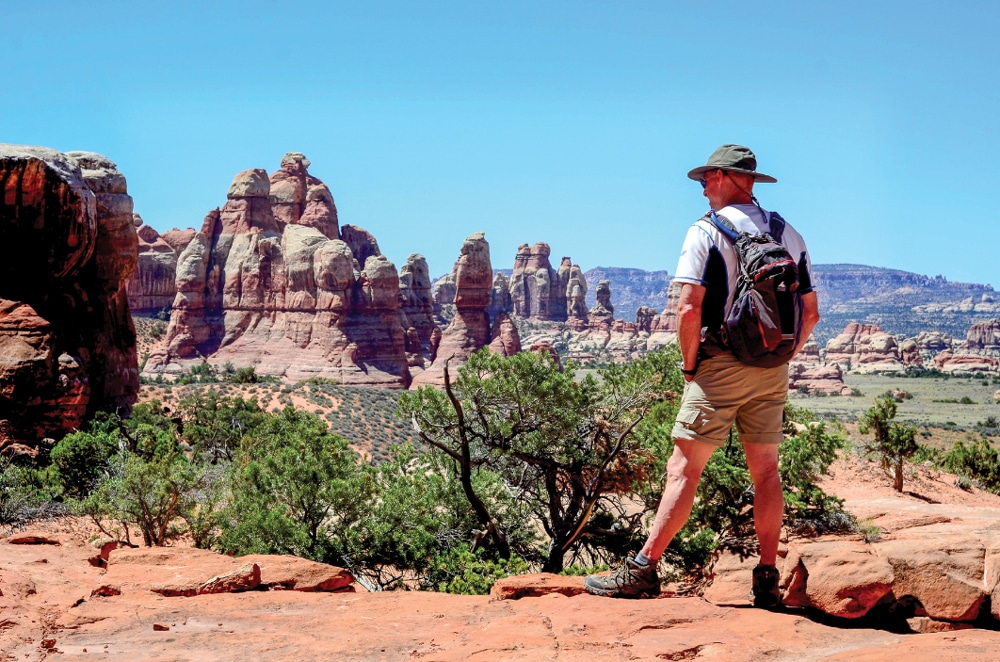
The Needles region was named for the colorful spires of Cedar Mesa Sandstone that highlight the area.
Adventures: The Rivers
As for the Green and the Colorado rivers, which have done so much to shape Canyonlands National Park, well, they have their own adventures to offer.
Where to begin depends on the degree of thrills you’re seeking. Above the Confluence, you can go for a relaxed flat-water float by raft, canoe, kayak or even stand-up paddleboard. No matter which craft you choose, these desert rivers will give you a chance to see this rugged red-rock country from a perspective very few Canyonlands visitors will ever know.
If, on the other hand, you’re looking for something to get the adrenaline flowing, you’ll want to focus on the waters of the Colorado below the Confluence. This 14-mile stretch is known as Cataract Canyon, home of some of the wildest whitewater (up to Class V rapids) in the western U.S., especially in the spring, where uncontrolled snowmelt-fueled flows roar down the narrow channel. You’ll find multiple outfitters offering whitewater trips that will give you a taste of what Grand Canyon explorer John Wesley Powell experienced when he quite literally put this area on the map in 1869.
If you come down somewhere between the two excitement extremes, allow us to suggest a jet-boat excursion. These outings give you much the same laid-back perspective on the river as the tamer flat-water float trips with a few exciting moments like 360-degree spins thrown in for good measure, making them an ideal compromise for couples or families with different thrill tolerances.
Adventures: The Maze
Located west of The Needles, on the opposite side of the Colorado River, The Maze region is perhaps Canyonlands’ toughest nut to crack. Getting to and through this remote, rugged part of the park requires more time and preparation, to say nothing of the proper rations and gear, in addition to advanced map-reading skills.
While it’s certainly possible to travel through The Maze on your own, it’s a much wiser move to go with one of the outfitters you’ll find operating out of the towns of Moab and Blanding. Options range from guided four-wheel-drive expeditions and mountain-biking tours to multiday backpacking trips through this hot, dry and difficult-to-navigate terrain.
The amount of effort it takes to spend time in The Maze is directly proportional to the reward, however. Here, 100 miles from anything that remotely resembles civilization, you’ll find a place tailor-made for those who truly want to get away from it all, even if only for a few short days.
A Good Place to Be
Ultimately, no matter which corner of Canyonlands National Park you decide to explore, you’ll find yourself faced with more than a dozen different adventure options, proving conclusively that between a rock and a hard place is actually a pretty good place to be.
Getting There
 You will have to visit each district of the park separately, as no bridges or roads connect the districts within the park. To reach the Island in the Sky region, take U.S. Highway 191 to Utah State Route 313 (10 miles north of Moab) and then drive southwest 22 miles. To reach The Needles region, drive U.S. 191 40 miles south of Moab to Utah State Route 211 and continue roughly 35 miles west. The Maze is the least accessible region and requires a four-wheel-drive vehicle, as the roads are unpaved. To reach Hans Flat Ranger Station, take Interstate 70 to Utah State Route 24 south for 24 miles. A left turn just beyond the turnoff to Goblin Valley State Park will take you along a two-wheel-drive dirt road; continue 46 miles to the ranger station.
You will have to visit each district of the park separately, as no bridges or roads connect the districts within the park. To reach the Island in the Sky region, take U.S. Highway 191 to Utah State Route 313 (10 miles north of Moab) and then drive southwest 22 miles. To reach The Needles region, drive U.S. 191 40 miles south of Moab to Utah State Route 211 and continue roughly 35 miles west. The Maze is the least accessible region and requires a four-wheel-drive vehicle, as the roads are unpaved. To reach Hans Flat Ranger Station, take Interstate 70 to Utah State Route 24 south for 24 miles. A left turn just beyond the turnoff to Goblin Valley State Park will take you along a two-wheel-drive dirt road; continue 46 miles to the ranger station.
If You Go
Here are some things to keep in mind as you plan your visit to Canyonlands National Park:
Logistics: First, you should remember that The Needles district is a 75-mile drive south out of Moab, making it actually a little closer to the town of Blanding. To spare yourself the long commute, you may want to consider splitting your stay between the two towns. There is no fuel or food available in the park, so fill up prior to arrival.
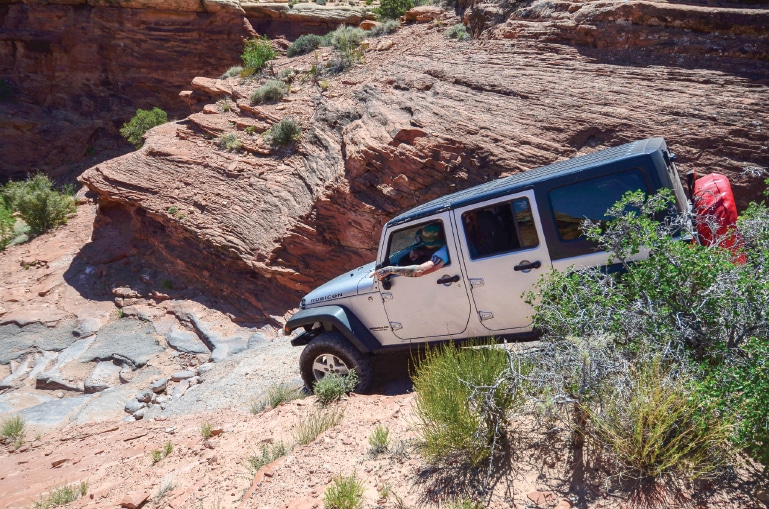
Needles offers about 50 miles of challenging backcountry roads that require high-clearance 4WD vehicles.
Outdoor Etiquette: Part of being a respectful visitor is knowing where you can and can’t go. In hiking, mountain biking and four-wheel-drive operation, that means staying on marked trails and roads, lest you do long-term damage to the desert environment’s all-important cryptobiotic soil crust. Note that ATVs, OHVs and UTVs are not permitted in the park, and all motorbikes must be interstate-legal.
Camping: Both The Needles (Squaw Flat Campground, 26 sites) and Island in the Sky (Willow Flat Campground, 12 sites) regions of Canyonlands feature primitive campgrounds with a 28-foot-length limit on RVs they can accommodate. The good news is that there are a number of commercial RV parks and BLM campgrounds available outside of the park; check out the Good Sam North American RV Travel & Savings Guide for more information.
Permits: Permits are required for all overnight trips in the backcountry. During the peak seasons of spring and fall, demand for permits frequently exceeds the number available, so it’s a good idea to make reservations well in advance or go with a local outfitter.
Guides/Outfitters: To find a list of local guides and outfitters, check out the listings put together by the Utah Guides and Outfitters Association (UGO) at www.utah-adventures.com.

